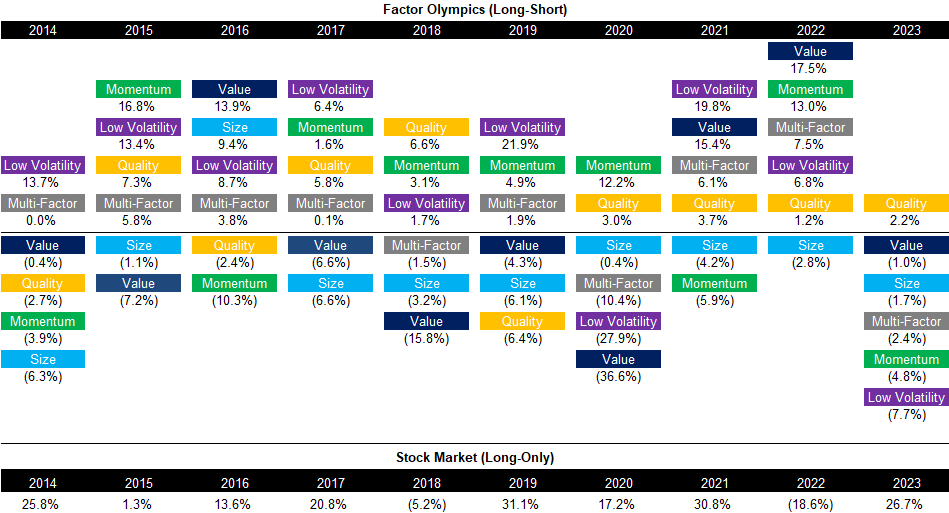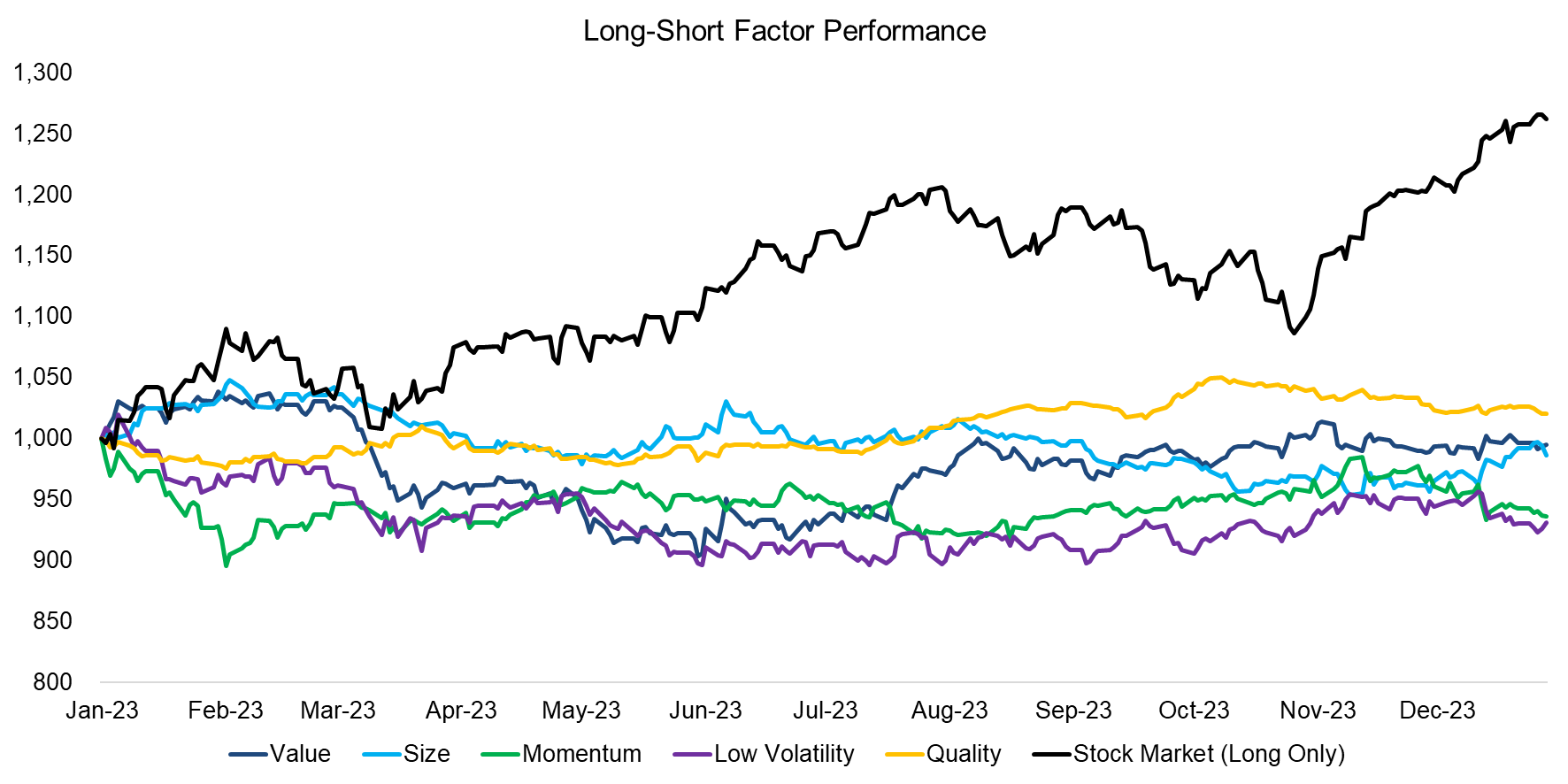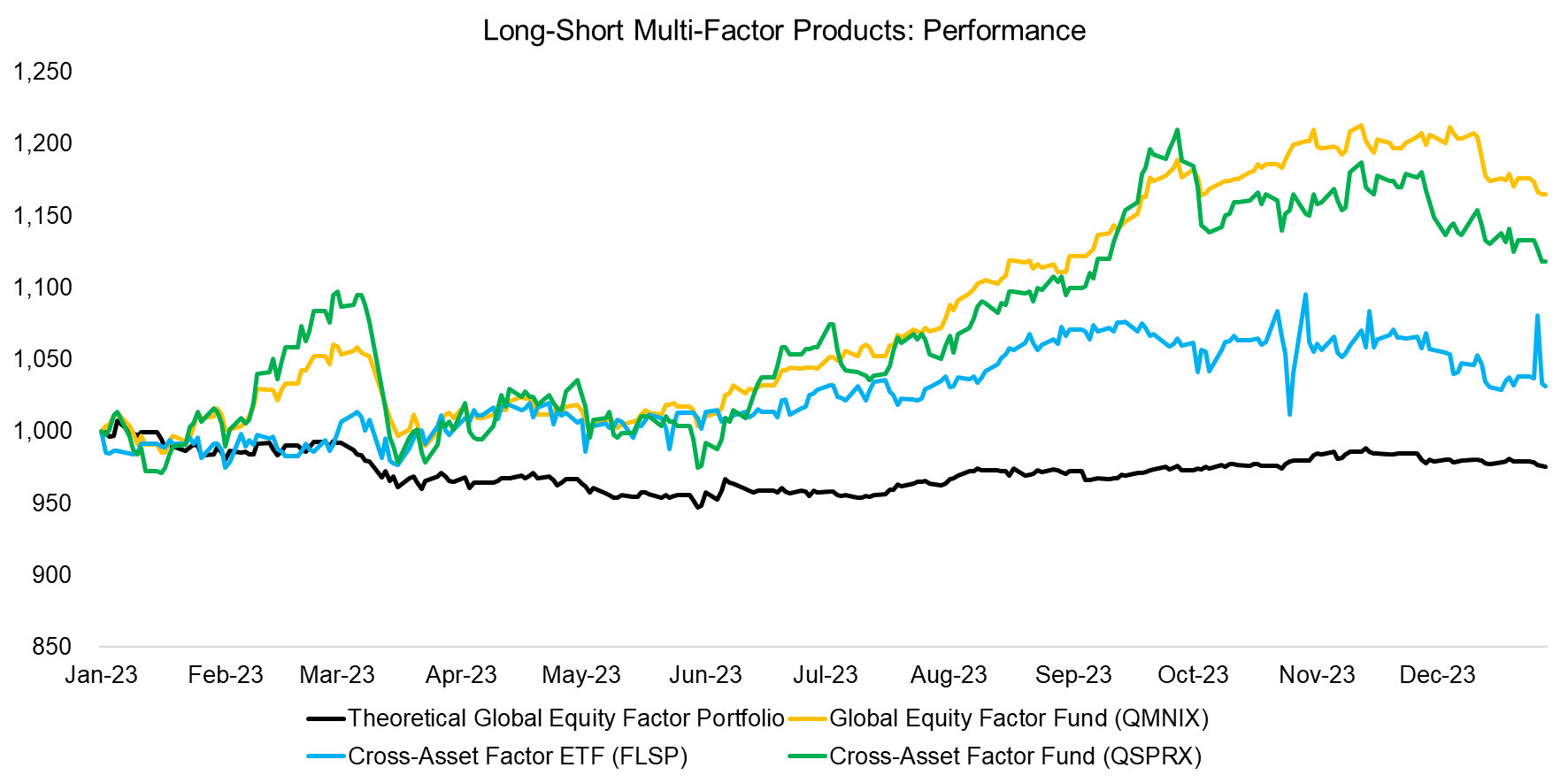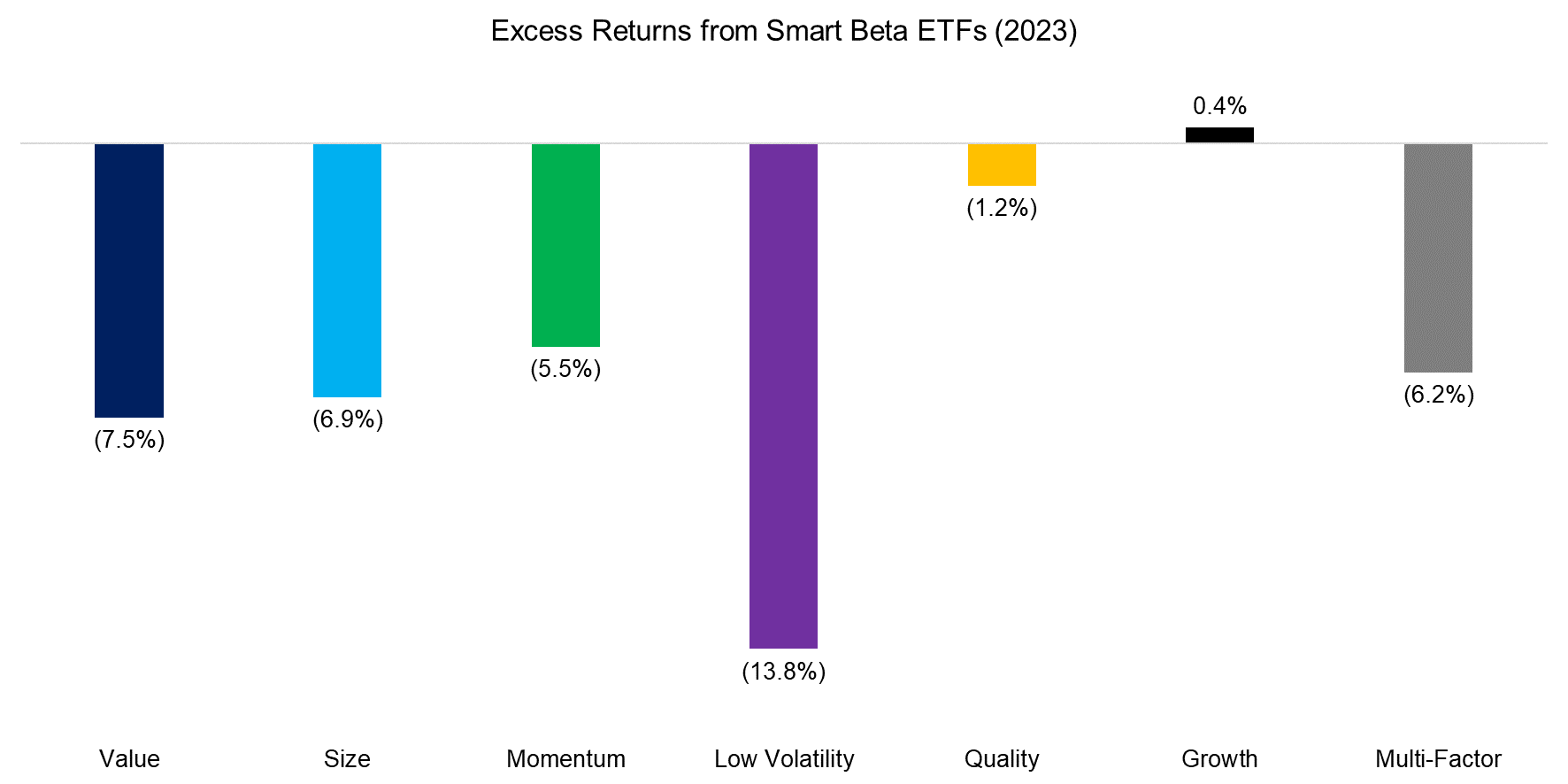Factor Olympics 2023
And the winner is…
January 2024. Reading Time: 10 Minutes. Author: Nicolas Rabener.
SUMMARY
- The performance of factors was unexciting and poor in 2023
- Quality performed the best, low volatility the worst
- Low-risk and cheap stocks are currently highly correlated
INTRODUCTION
We present the performance of five well-known factors on an annual basis for the last 10 years. Specifically, we only present factors where academic research supports the existence of positive excess returns across market cycles and asset classes.
METHODOLOGY
Our factors are created by constructing long-short beta-neutral portfolios of the top and bottom 30% of stocks. Only stocks with a minimum market capitalization of $1 billion are included. Portfolios rebalance monthly and transactions incur 10 basis points of costs.
FACTOR OLYMPICS: GLOBAL RETURNS
The table below shows the long-short factor performance for the last 10 years ranked top to bottom. The global series is comprised of all developed markets in Asia, Europe, and the US. Aside from displaying the factor performance, the analysis highlights the significant factor rotation in terms of profitability from one year to the next, highlighting the benefits of diversified exposure.
After a great performance in 2022, almost all popular factors generated negative returns in 2023. Only quality stocks, which are defined by a combination of return-on-equity and debt-over-equity, produced a positive return as they had in the previous three years. Low-volatility stocks performed the worst.

Source: Finominal
TRENDS IN GLOBAL FACTOR PERFORMANCE
The performance of factors has been relatively unexciting in 2023 as factor volatility was low and returns flattish.
In periods like the beginning and end of the year, factors like momentum and low volatility seem to have been negatively correlated to the stock market, while others like size exhibited positive correlations. It is worth noting that Finominal’s factors are constructed beta-neutral and rebalanced on a monthly basis, but they do occasionally pick up exposure to the stock market due to the beta-adjustment that uses a one-year lookback (read Beta in Beta-Neutral Factors?).

Source: Finominal
PERFORMANCE OF LONG-SHORT MULTI-FACTOR PRODUCTS
There are only a few liquid alternative mutual funds and ETFs that provide pure exposure to factors in the long-short format as seen in academic research. Given the poor performance of factor investing in recent years, many products were liquidated.
We compare the performance of three surviving products to that of the theoretical equal-weighted multi-factor portfolio. All three products outperformed the theoretical benchmark, but much of that can be attributed to the significant leverage utilized by the products, eg AQR’s Equity Market Neutral Fund (QMNIX) has a gross exposure of approximately 400%.
It is worth noting that there is not much difference between AQR’s cross-asset (QSPRX) and equity factor (QMNIX) products, despite the former providing exposure to risk premia in currencies, commodities, and fixed income. Perhaps that is explained by the large allocation to equity factors within QSPRX, or that the returns of factors in other asset classes have been small in magnitude. The correlation over the last nine years has been 0.7 as evidenced by the same trends in performance.

Source: Finominal
SMART BETA EXCESS RETURNS
Although investors should allocate to factors constructed as long-short portfolios given that these offer high diversification benefits, most invest via long-only smart beta ETFs (read Smart Beta vs Alpha + Beta). Following the money, we highlight the excess returns generated from investing in smart beta ETFs in the US, which represents a universe of 160+ products and approximately $800 billion of assets under management. We also show the performance of the growth factor, which is popular with investors but is not associated with positive excess returns over time (read What Are Growth Stocks?).
The returns can be different as long-short factor portfolios are constructed beta-neutral, i.e. there is a short portfolio and leverage is used to achieve beta-neutrality, and stocks are typically weighted equally. Smart beta ETFs are long-only and mostly weight stocks by their market capitalization.
Although the magnitude of excess returns from smart beta ETFs was different from the long-short returns in 2023, the direction was approximately the same. Quality stocks performed the best, and low-volatility stocks the worst.

Source: Finominal
FACTOR CORRELATIONS
The most interesting relationship is the high positive correlation between low-volatility and cheap stocks, which is reminiscent of the tech bubble in 2000 that featured the same constellation. Once the tech bubble imploded, these stocks outperformed significantly in the years thereafter.
It is also interesting to note that there are no strongly negative correlations among factors currently (read Factors: Correlation Check).

Source: Finominal
FURTHER THOUGHTS
This time of the year many investment banks and asset managers announce their 2024 year-end targets for the S&P 500. Looking at the historical track record of such forecasts shows that the accuracy has been poor. Although a lot of work flows into these, the world constantly changes and no man or machine can predict events such as the global pandemic or the Ukraine war.
But how about forecasting factor returns?
Investors can look at how cheap or expensive factors are by measuring the multiples of the stocks in the long and short portfolios, but the predictive power of these is only meaningful in the long term. However, most investors do not have the patience for an investment thesis to develop over a decade and are likely better off with diversifying across factors or applying factor risk management frameworks (read Factor Allocation Models).
RELATED RESEARCH
The Illusion of the Small-Cap Premium
Shorting Lousy Stocks = Lousy Returns?
Higher Volatility, Higher Alpha?
Outperformance Ain’t Alpha
Improving the Odds of Value Investing
The Value Factor’s Pain: Are Intangibles to Blame?
Smart Beta vs Alpha + Beta
How Painful Can Factor Investing Get?
GARP Investing: Golden or Garbage? II
ABOUT THE AUTHOR
Nicolas Rabener is the CEO & Founder of Finominal, which empowers professional investors with data, technology, and research insights to improve their investment outcomes. Previously he created Jackdaw Capital, an award-winning quantitative hedge fund. Before that Nicolas worked at GIC and Citigroup in London and New York. Nicolas holds a Master of Finance from HHL Leipzig Graduate School of Management, is a CAIA charter holder, and enjoys endurance sports (Ironman & 100km Ultramarathon).
Connect with me on LinkedIn or X.

